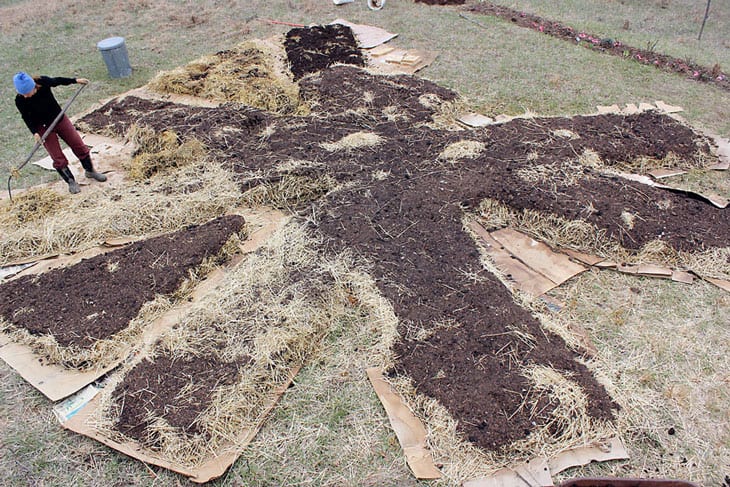‘Lasagna gardening’ is a no-dig permaculture method which is perfect for small spaces and even works on rocky ground and places where the soil quality is less than perfect. It’s also known as sheet mulching. This method mimics the natural processes of a forest, and provides a low-maintenance ecosystem where your organic veg will thrive. Lasagna beds can even be made on cement or asphalt, so even if you don’t have a garden you can still grow your own tasty organic produce! Those of you in the Southern hemisphere don’t need to wait until spring to get your lasagna garden up and running: if you spend a couple of hours to prepare it now, it will be ready to use when you need it.
The idea is to create layers (like a lasagna) of bio-materials, that will allow you to plant directly into the compost mixture. It’s really simple to do, but you will need to wait a while for the lasagna bed to break down and be ready to use. This method is perfect for lazy (but patient) gardeners, as well as absolute beginners! Here’s how it works:
1. If you do have a lawn, mow it before you begin. Also, remove any persistent weeds at the root.
If you are planting on cement or asphalt, you don’t need to do any of this, but instead you will create a raised bed that you can layer up and plant inside. You can either use a wooden frame or straw bales, as shown in the image below. Make the garden as small or as big as you like!

2. The lasagna recipe starts with a few thin layers of newspaper or cardboard. This stops the grass and weeds from growing up into the compost by blocking the sunlight, and worms love it! Next, soak the newspaper or cardboard with water.
3. The next step is to add the first layer of ‘green’ composting material. This can be anything that is rich in nitrogen. So: food scraps from the kitchen, coffee grounds, grass cuttings and garden waste, straw, and chicken manure if you can get hold of any. Some lasagna gardeners say the process works best if you place these separately, with the kitchen scraps first and then working through the list and ending with the chicken manure. However, if you’re pushed for time you can add a mix of all of these things as the first layer, and the bed will still work well.
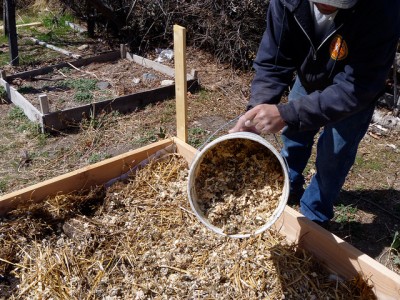
4. Next, we need a layer of ‘brown’ materials that are high in carbon. This could be any dead vegetation: dry leaves, bark, wood chips and twigs are perfect. Make sure you water as you go, soaking each layer thoroughly before adding the next.
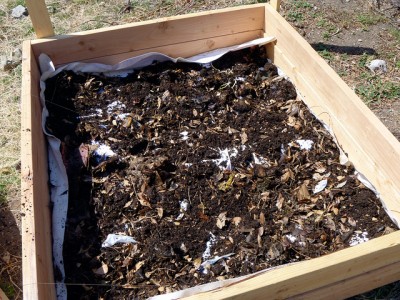
5. Steps 3 and 4 are repeated over and over again (don’t forget the water!) until your lasagna bed is between 20 and 40 inches deep. You can also add any animal manure and ash from the fire between the layers if you have them. You should then have layer after layer of green (nitrogen) and brown (carbon) that mimics natural processes of composting on a forest floor.
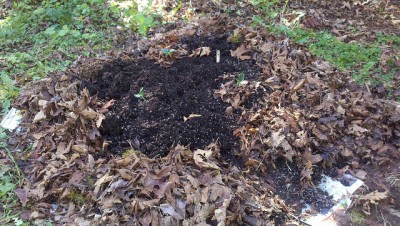
6. The final step is to top your lasagna with a fabric that will protect it from harsh weather conditions but still allow it to breathe and retain moisture. Tarp and plastic covers are no good for this; the best thing to use is a compostex cover which you can buy online or from any good hardware store or garden center. The only exception to using plastic would be if it’s raining/snowing so heavily it could destroy your little eco-system. Just check your bed once a week to make sure it’s just right- it should be moist, but not soaking wet. Worms will soon start occupying the space, but if you want to speed up the process you can buy some (or go hunting around the garden!) and add them to the finished pile.
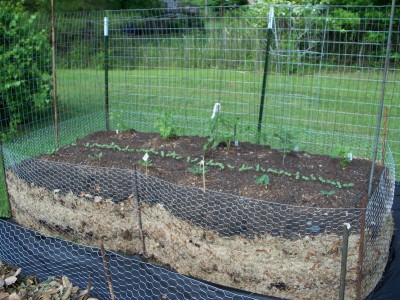
7. If you follow these steps, your bed will be ready to use within a year. Can’t wait that long? Simply top your lasagna bed with a layer of soil (at least 4 inches deep) and you can plant shallow-rooted fruit and vegetables immediately. Strawberries, leafy greens, radish, lettuce, herbs, broccoli, cabbage, cauliflower, sprouts, onions, leeks, potatoes and corn will all flourish in a young lasagna bed. Avoid sweet potatoes, tomatoes, rhubarb, artichokes and any squashes (marrow, pumpkin etc) until your bed is mature, because they require much more depth for their roots.
If you’re new to organic gardening, you might want to check out this article to help you decide what to plant and pick up some top tips for growing in small, urban places. Check out the video above from Grow Organic.com if you need to see the lasagna bed process in action.
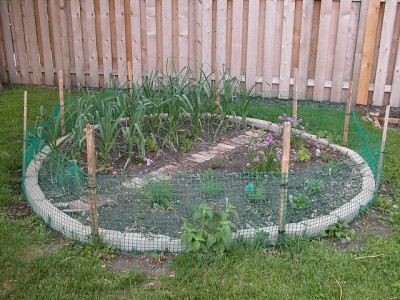
This article (‘Lasagna Gardening’: Here’s How To Grow Organic Vegetables Easily (Even Without A Garden!)) is free and open source. You have permission to republish this article under a Creative Commons license with attribution to the author and TrueActivist.com.
